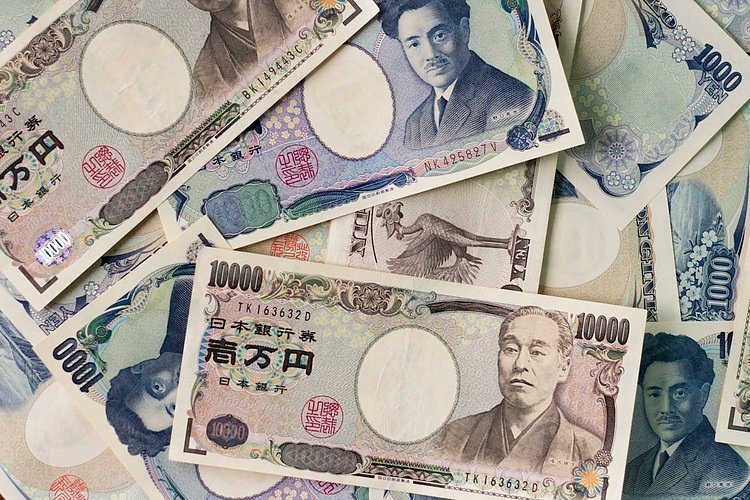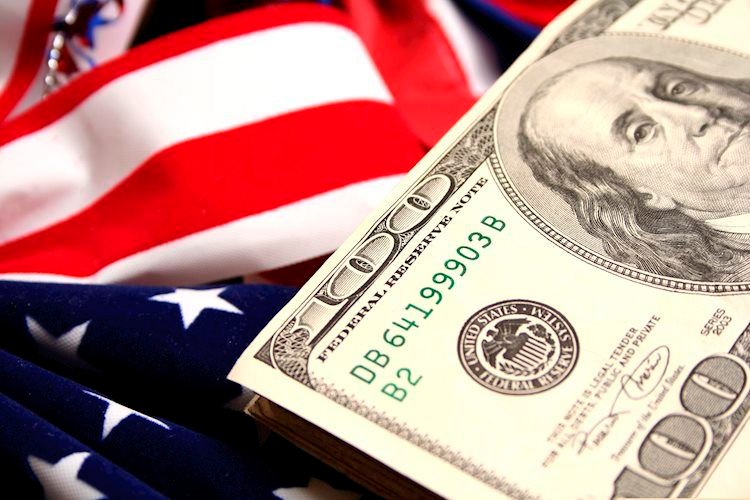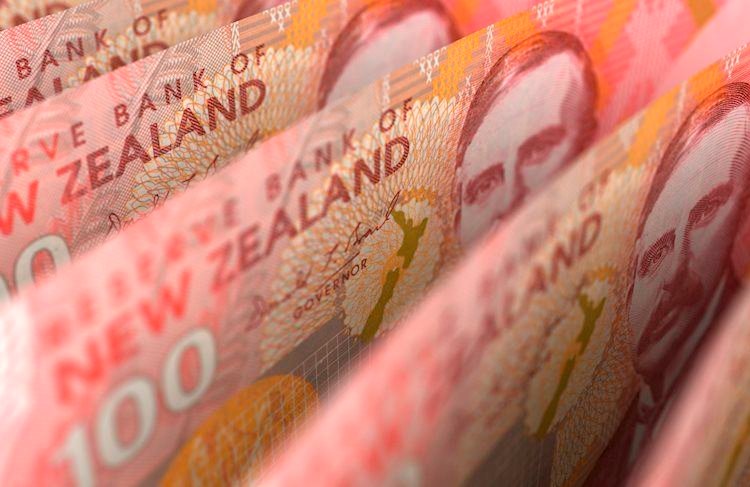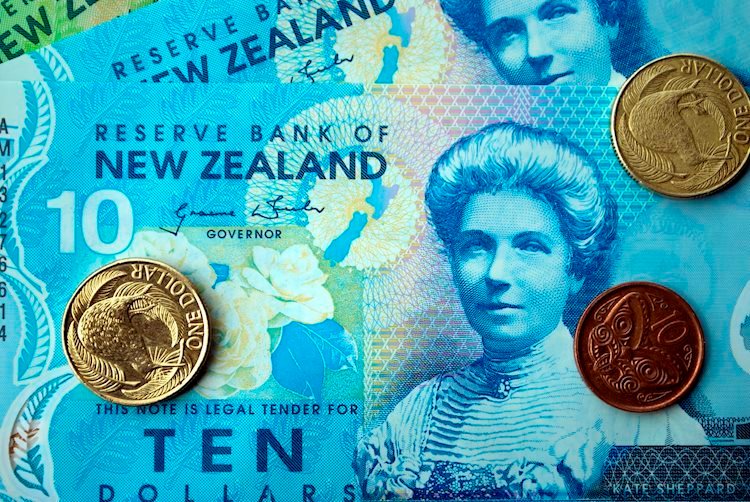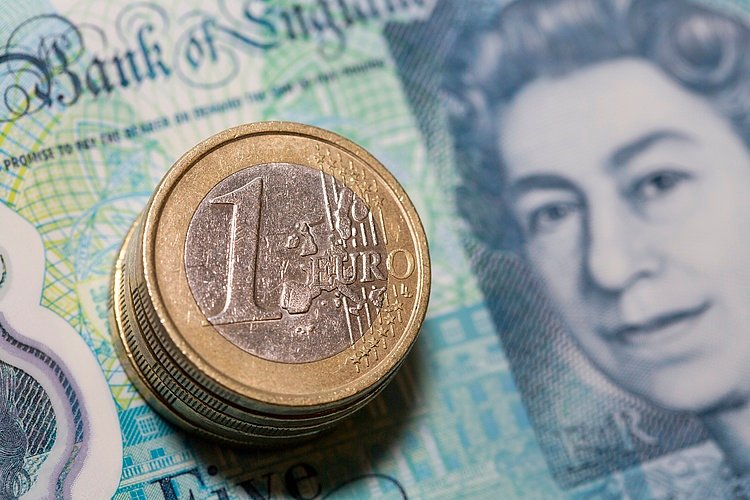- The Japanese Yen attracts some haven flows, though it lacks bullish conviction.
- The BoJ rate-hike uncertainty and disappointing data cap the upside for the JPY.
- Smaller Fed rate cut bets underpin the USD and offer some support to USD/JPY.
The Japanese Yen (JPY) strengthened against its American counterpart on Tuesday and reversed a major part of the previous day’s losses to the lowest level since early August. The overnight downfall in the US equity markets, along with persistent geopolitical risks, turned out to be key factors that drove flows towards the safe-haven JPY. That said, the uncertainty over the Bank of Japan’s (BoJ) rate-hike plans keeps a lid on any meaningful appreciating move.
Adding to this, the disappointing release of Japan’s Core Machinery Orders for August contributes to capping the JPY during the Asian session on Wednesday. Meanwhile, the US Dollar (USD) stands firm near its highest level in more than two months amid expectations that the Federal Reserve (Fed) will proceed with modest interest rate cuts over the next year. This further assists the USD/JPY pair to hold steady around the 149.00 mark and warrants caution for the JPY bulls.
Daily Digest Market Movers: Japanese Yen bulls seem non-committed amid doubts over BoJ’s rate hike plans
- The Japanese Yen struggles to capitalize on the previous day’s recovery against the US Dollar, from its lowest level since early August, amid doubts over when the Bank of Japan would raise interest rates again.
- A significant dovish shift in rhetoric from the BoJ Governor Kazuo Ueda and a surprising opposition to further rate hikes from Japan’s Prime Minister Shigeru Ishiba fueled uncertainty around the monetary policy.
- Government data showed this Wednesday that Japan’s Core Machinery Orders fell for the second straight month, by 1.9% in August, missing estimates by a big margin and signaling deterioration in demand.
- Given that manufacturing represents about 15% of Japan’s workforce, weaker orders may affect the labor market, resulting in slower wage growth, reduced consumer spending and complicating BoJ’s rate-hike plans.
- The US Dollar consolidates near its highest level since August 8 amid firming expectations for a less aggressive policy easing by the Federal Reserve and bets for a regular 25 basis points interest rate cut in November.
- San Francisco Fed President Mary Daly noted on Tuesday that the US central bank has made significant progress on tamping down inflation and sees one or two more rate cuts this year if economic forecasts are met.
- Atlanta Fed President Raphael Bostic said that he doesn’t see strong signs of a potential recession looming over the horizon as the US economy continues to perform well and that the inflation is heading back to 2%.
- The Biden administration has warned Israel that it faces possible punishment, including the potential stopping of US weapons transfers if it does not take immediate action to let more humanitarian aid into Gaza.
Technical Outlook: USD/JPY could accelerate the fall once the 148.60-148.55 support is broken decisively
From a technical perspective, any further decline is likely to find decent support near the 148.60-148.55 region. Some follow-through selling, however, could make the USD/JPY pair vulnerable to weaken further below the 148.00 round figure and test last week’s swing low, around the 147.35 area. The latter is followed by the 147.00 mark, which if broken decisively will suggest that the recent move-up witnessed over the past month or so has run its course and pave the way for deeper losses.
On the flip side, the 150.00 psychological mark seems to act as an immediate strong barrier, above which the USD/JPY pair could accelerate the positive move towards the August monthly swing high, around the 150.85-150.90 region. Some follow-through buying beyond the 151.00 mark will be seen as a fresh trigger for bullish traders and lift spot prices to the 152.00 neighborhood en route to the 152.65-152.70 region.
Japanese Yen FAQs
The Japanese Yen (JPY) is one of the world’s most traded currencies. Its value is broadly determined by the performance of the Japanese economy, but more specifically by the Bank of Japan’s policy, the differential between Japanese and US bond yields, or risk sentiment among traders, among other factors.
One of the Bank of Japan’s mandates is currency control, so its moves are key for the Yen. The BoJ has directly intervened in currency markets sometimes, generally to lower the value of the Yen, although it refrains from doing it often due to political concerns of its main trading partners. The BoJ ultra-loose monetary policy between 2013 and 2024 caused the Yen to depreciate against its main currency peers due to an increasing policy divergence between the Bank of Japan and other main central banks. More recently, the gradually unwinding of this ultra-loose policy has given some support to the Yen.
Over the last decade, the BoJ’s stance of sticking to ultra-loose monetary policy has led to a widening policy divergence with other central banks, particularly with the US Federal Reserve. This supported a widening of the differential between the 10-year US and Japanese bonds, which favored the US Dollar against the Japanese Yen. The BoJ decision in 2024 to gradually abandon the ultra-loose policy, coupled with interest-rate cuts in other major central banks, is narrowing this differential.
The Japanese Yen is often seen as a safe-haven investment. This means that in times of market stress, investors are more likely to put their money in the Japanese currency due to its supposed reliability and stability. Turbulent times are likely to strengthen the Yen’s value against other currencies seen as more risky to invest in.







